
Edgar Rice Burroughs was an American writer, best known for his prolific output in the adventure, science fiction, and fantasy genres. Best known for creating the characters Tarzan and John Carter, he also wrote the Pellucidar series, the Amtor series, and the Caspak trilogy.

Pellucidar is the internal surface of a fictional Hollow Earth invented by American writer Edgar Rice Burroughs for a series of action adventure stories. In a crossover event, Tarzan, who was also created by Burroughs, visits Pellucidar.

Tarzan the Ape Man is a 1932 pre-Code American action adventure film released by Metro-Goldwyn-Mayer featuring Edgar Rice Burroughs' Tarzan and starring Johnny Weissmuller, Neil Hamilton, C. Aubrey Smith and Maureen O'Sullivan. It was Weissmuller's first of 12 Tarzan films. O'Sullivan played Jane in six features between 1932 and 1942. The film is loosely based on Burroughs' 1912 novel Tarzan of the Apes, with the dialogue written by Ivor Novello. The film was directed by W.S. Van Dyke. Metro-Goldwyn-Mayer released two remakes of Tarzan, the Ape Man in 1959 and in 1981, but each was a different adaptation of Rice Burroughs' novel. It is also the first appearance of Tarzan's famous yell.
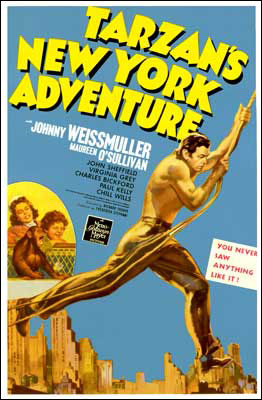
Tarzan's New York Adventure is a 1942 American adventure film from Metro Goldwyn Mayer, produced by Frederick Stephani, directed by Richard Thorpe, that stars Johnny Weissmuller and Maureen O'Sullivan. This was the sixth and final film in MGM's Tarzan series and was the studio's last Tarzan feature until 1957's Tarzan and the Lost Safari. Although Tarzan's New York Adventure includes scenes set in New York, as well as the customary jungle sequences, it is yet another Tarzan production primarily shot on MGM's back lots.
John Eric Holmes was an American professor of neurology and writer of non-fiction, fantasy and science fiction. His writings appeared under his full name and under variants such as Eric Holmes and J. Eric Holmes and the pen name Sidney Leland.
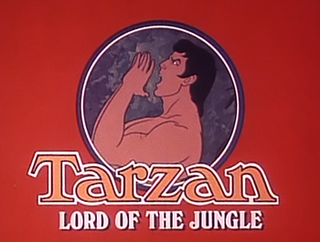
Tarzan, Lord of the Jungle is an American animated series created by the Filmation studio for Saturday mornings on CBS, starting in 1976. This was the first animated series about the jungle hero. There are 36 episodes produced over four seasons.
Lydie Denier is a French-American model and actress. She has appeared in numerous TV series and films.

Jane Porter is a fictional character in Edgar Rice Burroughs's series of Tarzan novels and in adaptations of the saga to other media, particularly film. Jane, an American from Baltimore, Maryland, is the daughter of professor Archimedes Q. Porter. She becomes the love interest, later the wife of Tarzan and subsequently the mother of their son, Korak. She develops over the course of the series from a conventional damsel in distress, who must be rescued from various perils, to an educated, competent and capable adventuress in her own right, fully capable of defending herself and surviving on her own in the jungles of Africa.

Tarzán is a television series that aired in syndication from 1991–1994. In this version of the show, Tarzan was portrayed as a blond environmentalist, with Jane turned into a French ecologist. The series aired in syndication in the United States.

At the Earth's Core is a 1914 fantasy novel by American writer Edgar Rice Burroughs, the first in his series about the fictional "hollow earth" land of Pellucidar. It first appeared as a four-part serial in All-Story Weekly from April 4 to 25, 1914. It was first published in book form in hardcover by A. C. McClurg in July, 1922.

William Joseph Lara was an American actor, martial artist, and musician, known for the role of Tarzan in the American TV series Tarzan: The Epic Adventures.
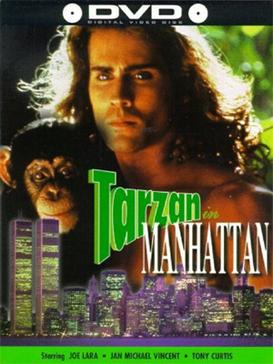
Tarzan in Manhattan is a 1989 action adventure CBS television film. Joe Lara portrays Tarzan, and Kim Crosby appears as Jane Porter. Tony Curtis and Jan-Michael Vincent co-star. The telefilm was produced by Max A. Keller, Micheline H. Keller and Gina Scheerer, written by Anna Sandor and William Gough, and directed by Michael Schultz. It aired on April 15, 1989.

David Innes is a fictional character created by Edgar Rice Burroughs as the protagonist of his Pellucidar novels. He first appeared in the novel At the Earth's Core, serialized in four parts in All-Story Weekly from April 4–25, 1914 and issued in book form in hardcover by A. C. McClurg in July, 1922.
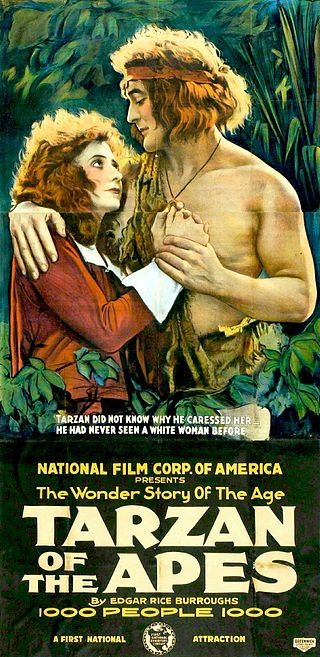
Tarzan, a fictional character created by Edgar Rice Burroughs, first appeared in the 1912 novel Tarzan of the Apes, and then in twenty-four sequels by Burroughs and numerous more by other authors. The character proved immensely popular and quickly made the jump to other media, first and most notably to comics and film.

The Adventures of Tarzan (1921) is a 15 chapter movie serial which features the third and final appearance of Elmo Lincoln as Tarzan. The serial was produced by Louis Weiss, written by Robert F. Hill and Lillian Valentine, and directed by Robert F. Hill and Scott Sidney. The first chapter was released on December 1, 1921.

Master of Adventure: The Worlds of Edgar Rice Burroughs is a book by Richard A. Lupoff that explores the work of Edgar Rice Burroughs, the creator of Tarzan and author of numerous science-fiction, fantasy, and adventure novels. The book is one of the few major works of criticism covering the work of Burroughs, and it helped create renewed interest in his work during the 1960s.

Tarzan is a fictional character, a feral child raised in the African jungle by the Mangani great apes; he later experiences civilization, only to reject it and return to the wild as a heroic adventurer.
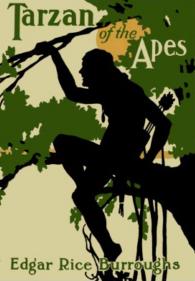
Tarzan is a series of 24 adventure novels written by Edgar Rice Burroughs (1875–1950) and published between 1912 and 1966, followed by several novels either co-written by Burroughs, or officially authorized by his estate. There are also two works written by Burroughs especially for children that are not considered part of the main series.
Tarzan vs. Predator: At the Earth's Core is a four-issue comic book crossover limited series that was first published by Dark Horse Comics from January–June 1996. It was written by Walter Simonson, illustrated and inked by Lee Weeks, colored by Perry McNamee, lettered by Pat Brosseau and Vickie Williams, and edited by Mike Richardson and Peet Janes, with cover art by Weeks.
William Cecil Clayton is a recurring fictional character in Edgar Rice Burroughs's series of Tarzan novels and in adaptations of the saga to other media, particularly comics. He is an English aristocrat.
















